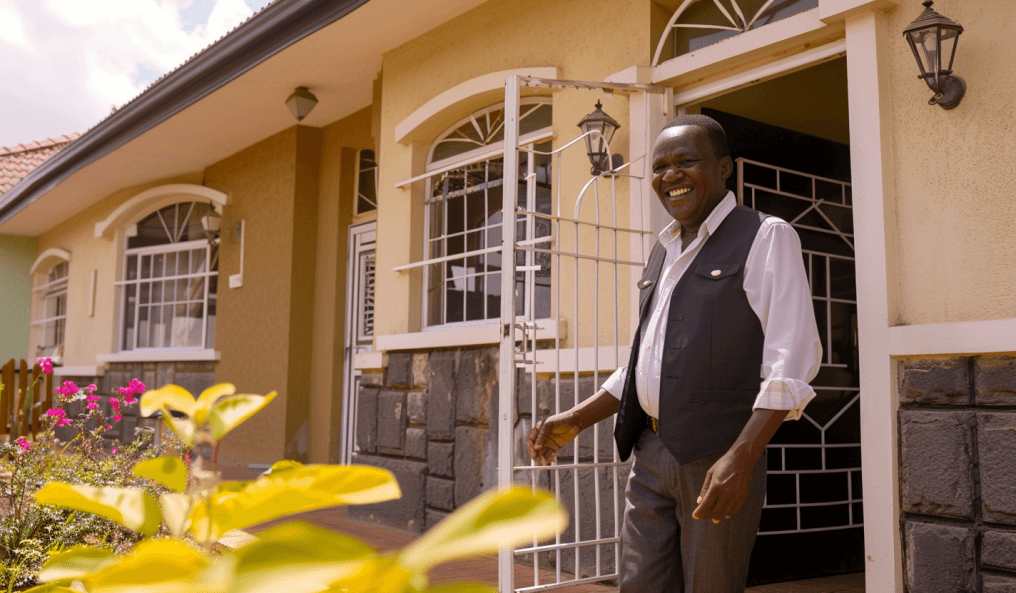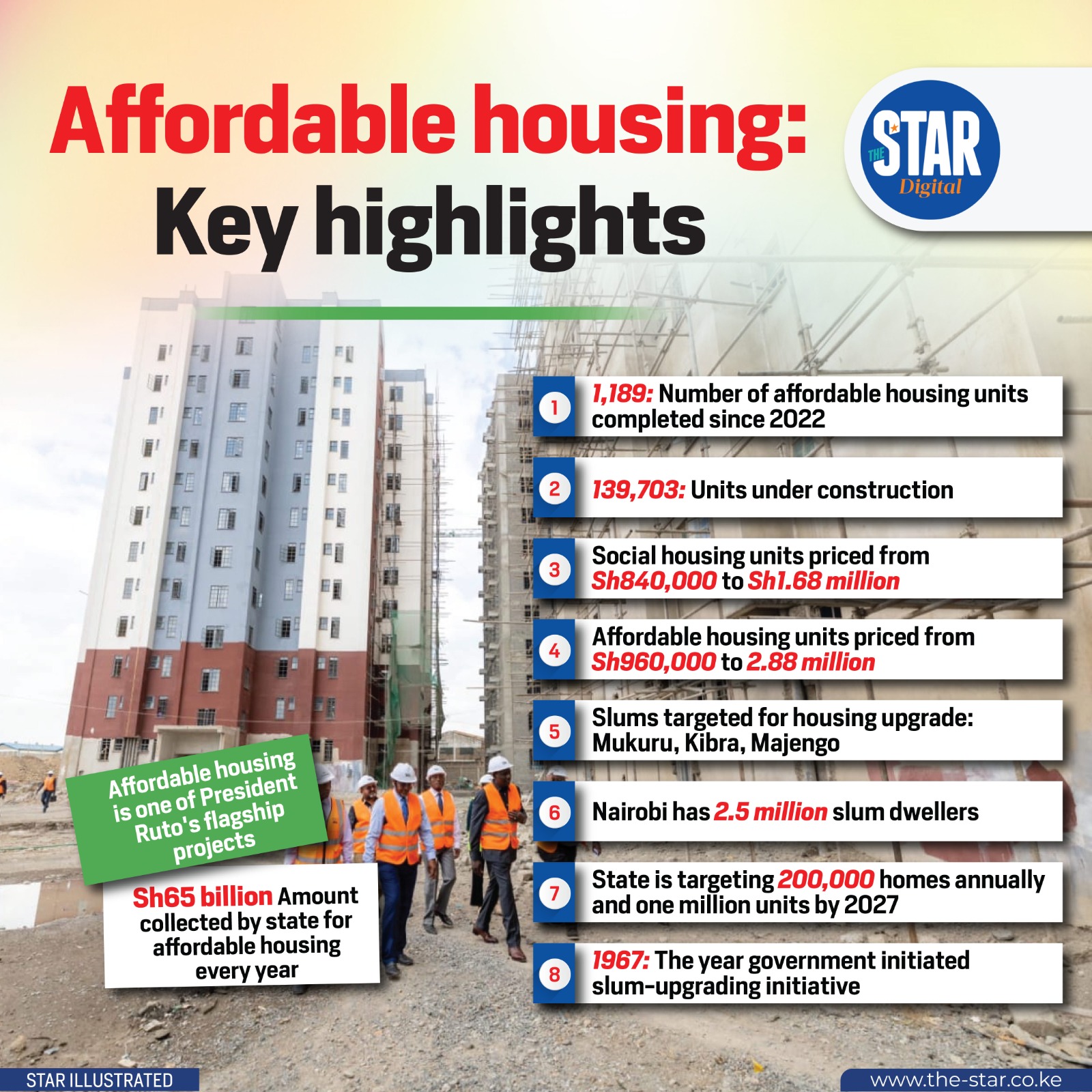Kenya's Affordable Housing Programme (AHP) is rapidly transforming urban development, aiming to bridge the significant housing deficit that has long plagued the nation. In 2025, the government's commitment to providing decent and affordable homes for its citizens remains a central pillar of its economic agenda, enshrined within the broader goals of Vision 2030. This deep dive explores the current state of the policy, its key projects, the mechanisms in place for both buyers and investors, and the ongoing efforts to ensure its success in delivering accessible housing solutions across the country.
The Vision and Remarkable Progress of AHP
The Kenyan government has articulated an ambitious, yet critical, goal: to construct 200,000 affordable housing units annually, with a long-term target of achieving 1 million homes over a five-year period. This initiative is not merely a construction drive but a fundamental shift towards addressing a national housing crisis that has historically seen supply primarily cater to the high-end market, leaving a vast majority of the population underserved. As of early 2025, significant strides have been made, with reports indicating over 140,000 units completed or under various stages of development. The overwhelming response to recent unit releases, such as the 5,000 units that attracted over 500,000 applicants through the Boma Yangu platform, powerfully underscores the immense and pressing demand for affordable housing across every segment of Kenyan society. The AHP is designed to be a comprehensive strategy that simultaneously stimulates economic growth, creates substantial job opportunities, and significantly enhances the quality of life for millions of Kenyans by providing stable, dignified shelter.
Key Projects and Strategic Locations
The AHP has seen vigorous activity concentrated in various urban centers, with a clear focus on high-demand areas. In Nairobi, flagship projects in areas like Ngara, Pangani, and Starehe are either completed or nearing completion. These developments are delivering much-needed housing solutions primarily for middle- and low-income earners, with a strong emphasis on practical 1- and 2-bedroom units. This unit configuration directly addresses the strong demand from urban professionals and civil servants who are typically first-time homebuyers seeking entry into the property market. Beyond the capital, the program is actively expanding into other counties, reflecting a strategic intent to decentralize affordable housing opportunities and stimulate regional development. The government's innovative strategy involves providing essential resources such as serviced land and bulk infrastructure to private developers. This is further complemented by attractive tax incentives, designed to aggressively encourage and foster robust private sector participation in the affordable housing agenda. This public-private partnership model is deemed absolutely crucial for accelerating the efficient and timely delivery of housing units at scale.
Eligibility and the Streamlined Application Process for Buyers
For individuals aspiring to acquire an affordable housing unit under the AHP, the primary gateway is typically the Boma Yangu platform. The eligibility criteria, as meticulously outlined in the comprehensive Affordable Housing Act, 2024, generally require applicants to demonstrate proof of a requisite deposit and meet specific income thresholds. The Act thoughtfully categorizes affordable housing into distinct segments to ensure equitable access:
- Social Housing Unit: Exclusively for individuals with a monthly income below KES 20,000, targeting the most vulnerable populations.
- Affordable Housing Unit: Designed for those earning between KES 20,000 and KES 149,000 monthly, catering to the broad middle and lower-middle-income brackets.
- Affordable Middle Class Housing Unit: Targeted at individuals earning over KES 149,000 monthly, ensuring that even higher-income brackets can access subsidized housing.
- Rural Affordable Housing Unit: Specifically tailored for persons residing in non-urban areas, recognizing the housing needs beyond major cities.
Significantly, preference in unit allocation is often granted to marginalized persons, vulnerable groups, youth, women, and persons with disabilities, ensuring inclusivity. The Act also ingeniously facilitates voluntary savings through the dedicated Affordable Housing Fund. This mechanism allows potential buyers to systematically build up their deposits over time, with the added benefit of accrued interest, making homeownership more attainable. Critically, those who make voluntary contributions but are ultimately not allocated a unit retain the flexible option to either withdraw their accumulated savings or apply for an affordable mortgage to develop a rural unit, leveraging their savings and existing land as collateral, thereby providing a safety net and alternative pathways to homeownership.
Lucrative Opportunities for Investors and Developers
The AHP presents truly significant and exciting opportunities for both private developers and astute investors. The government has put in place compelling incentives, such as a reduced corporate tax rate of 15% for developers who commit to building 100 or more affordable housing units within the program. Additionally, the government’s provision of serviced land and crucial bulk infrastructure substantially reduces initial development costs, thereby enhancing the financial viability and attractiveness of these projects. Investors can strategically engage in joint ventures with experienced local developers or focus on off-plan property sales within AHP projects. The inherently stable demand for affordable units ensures a consistent and predictable market, while the government's robust commitment provides a relatively secure investment environment. The program’s emphasis on local sourcing of construction materials also generates symbiotic opportunities for local industries and the vital Jua Kali sector players, fostering broader economic participation and job creation.
Addressing Challenges and Charting the Way Forward
Despite the commendable progress, the AHP is not without its challenges. Rising construction costs, particularly due to proposals in the Finance Bill 2025 to potentially remove VAT exemptions on certain building materials, could pose significant hurdles. Legal disputes, while fewer, have on occasion caused unwelcome delays in occupancy timelines for some projects. Furthermore, certain developments have faced community resistance over sensitive issues like land acquisition, potential displacement, and compensation, underscoring the need for careful community engagement. Infrastructure deficits in some target areas can also occasionally hinder the broader appeal and utility of new developments. To effectively overcome these challenges, sustained and intensified collaboration among the government, private developers, and local communities is absolutely essential. Exploring and implementing innovative solutions, such as leveraging low-cost construction technologies and developing alternative financing models like rent-to-own schemes, can further enhance the overall affordability and accessibility of housing units. The ongoing digitization of land records through the Ardhisasa platform continues to be a crucial reform, aiming to significantly improve transparency, reduce instances of fraud, and ultimately build stronger investor and public confidence in the land sector.
Conclusion: Laying a Robust Foundation for Future Growth
Kenya's Affordable Housing Policy in 2025 is a dynamic, evolving, and profoundly impactful initiative. While challenges persist, the government's unwavering commitment, coupled with increasingly robust private sector participation and the continuous exploration of innovative solutions, is gradually but surely transforming the country's urban landscape. For both aspiring homeowners and shrewd investors, a nuanced understanding of the AHP's intricacies and a strategic alignment with its overarching objectives can unlock immense potential for growth and social impact. The program transcends mere brick-and-mortar construction; it is fundamentally about building a more equitable, inclusive, and prosperous future for all Kenyans, laying a strong and sustainable foundation for comprehensive national development and widespread wealth creation. The AHP stands as a testament to Kenya's resolve to address its most pressing societal needs through visionary policy and collaborative execution.




